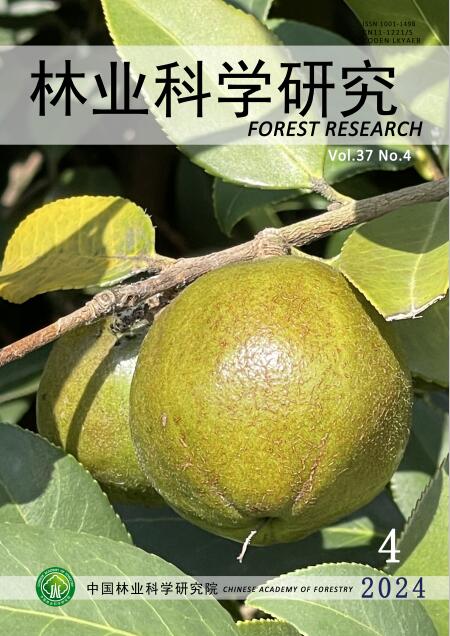Micronutrient Content of Wild Vegetable Species Harvested in Forested and Non-Forested Areas in Southwest Burkina Faso
Q4 Agricultural and Biological Sciences
引用次数: 1
Abstract
Generation of improved data on biodiverse foods for nutrition required that nutrient composition data be paired with proper botanical identification of species. This study assessed the nutrient content of ten wild vegetable species within and outside forested area in Burkina Faso. The ten-vegetable species included: Adansonia digitata L., Balanites aegyptiaca (L.) Del., Boerhavia diffusa L., Ceiba pentandra (L.) Gaertn., Cerathoteca sesamoides Endl., Crataeva religiosa Sieber, Ficus ovata Vahl, Moringa oleifera Lam., Strycnos spinosa Lam. and Vitex doniana Sweet. Additionally, the nutrient content for each of the species was compared for specimens collected within and outside forested areas. The iron levels ranged between 3.9-107.9 mg/100 g dry weight, the zinc levels from 11-22 mg/100 g dry weight, and the calcium levels from 25-4637 mg/100 g dry weight. The beta carotene levels were between 0 and 1772 μg/100 g dry weight and the protein levels between 6.6 and 26.4 g/100 g dry weight. The variation between species was often greater than the variation between sites, for a given species. However, large differences in nutrient content between collection sites were seen in many species for many nutrients. Across all species, calcium and protein tended to be higher in forested areas while zinc and iron tended to be lower and beta carotene was highly variable. We sought to better understand the impact of ecosystems services from forests on nutrient composition. Given our modest sample size and the high levels of variation in nutrient content it was difficult to draw conclusions from our results. Despite this, it is increasing clear that wild and traditional African leafy vegetables can play an important role in meeting the international recommendations for fruit and vegetable intake.布基纳法索西南部森林和非森林地区收获的野生蔬菜的微量营养素含量
为了改进生物多样性食物的营养数据,需要将营养成分数据与物种的适当植物学鉴定相结合。本研究评估了布基纳法索林区内外10种野生蔬菜的营养成分。10种蔬菜包括:Adansonia digitata L., Balanites aegyptiaca (L.);德尔。白花菊,五角草(L.)Gaertn。;;;;;,红木,无花果,辣木。斯特里克诺斯·斯皮诺萨·林。和牡荆花甜。此外,还比较了在森林区域内外采集的标本中每种物种的营养成分。铁含量在3.9-107.9毫克/100克干重之间,锌含量在11-22毫克/100克干重之间,钙含量在25-4637毫克/100克干重之间。β -胡萝卜素含量在0 ~ 1772 μg/100 g干重之间,蛋白质含量在6.6 ~ 26.4 g/100 g干重之间。对于一个给定的物种,物种之间的差异往往大于地点之间的差异。然而,在许多物种中,许多营养物质的营养含量在不同的采集点之间存在很大差异。在所有物种中,森林地区的钙和蛋白质含量往往较高,而锌和铁含量往往较低,β -胡萝卜素变化很大。我们试图更好地了解森林生态系统服务对营养成分的影响。鉴于我们的样本量不大,营养成分变化很大,很难从我们的结果中得出结论。尽管如此,越来越清楚的是,野生和传统的非洲叶菜在满足国际推荐的水果和蔬菜摄入量方面可以发挥重要作用。
本文章由计算机程序翻译,如有差异,请以英文原文为准。
求助全文
约1分钟内获得全文
求助全文
来源期刊

林业科学研究
Environmental Science-Ecology
CiteScore
0.90
自引率
0.00%
发文量
4834
期刊介绍:
Forestry Research is a comprehensive academic journal of forestry science organized by the Chinese Academy of Forestry. The main task is to reflect the latest research results, academic papers and research reports, scientific and technological developments and information on forestry science mainly organized by the Chinese Academy of Forestry, to promote academic exchanges at home and abroad, to carry out academic discussions, to flourish forestry science, and to better serve China's forestry construction.
The main contents are: forest seeds, seedling afforestation, forest plants, forest genetic breeding, tree physiology and biochemistry, forest insects, resource insects, forest pathology, forest microorganisms, forest birds and animals, forest soil, forest ecology, forest management, forest manager, forestry remote sensing, forestry biotechnology and other new technologies, new methods, and to increase the development strategy of forestry, the trend of development of disciplines, technology policies and strategies, etc., and to increase the forestry development strategy, the trend of development of disciplines, technology policies and strategies. It is suitable for scientists and technicians of forestry and related disciplines, teachers and students of colleges and universities, leaders and managers, and grassroots forestry workers.
 求助内容:
求助内容: 应助结果提醒方式:
应助结果提醒方式:


